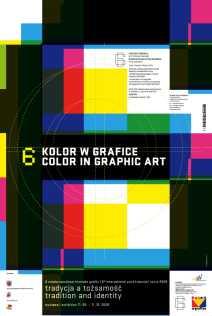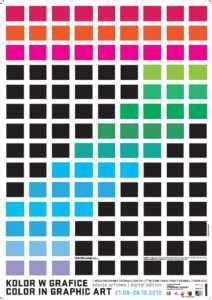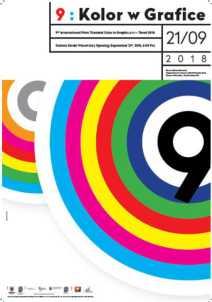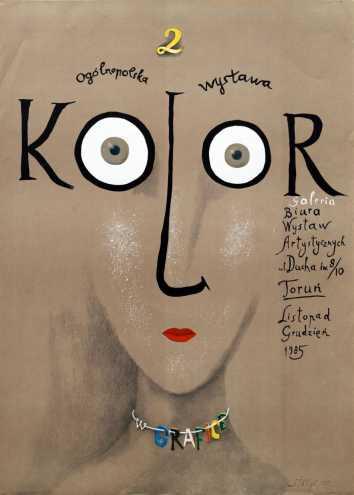
7 minute read
Triennale Grafiki Kolor w grafice The Colour in Graphics Triennial
Triennale Grafiki Kolor w grafice Colour in Graphics Triennial
Triennale Grafiki Kolor w grafice to najstarsza cykliczna impreza artystyczna Wozowni – odbywa się od początku lat 80. Na przestrzeni kilku dekad jej kształt się zmieniał, jednak główny cel pozostał ten sam – wystawy mają prezentować wiodące tendencje w grafice artystycznej i stanowić platformę spotkań z twórczością artystów z Polski i ze świata, a także przestrzeń dyskusji na temat specyfiki grafiki i miejsca, jakie zajmuje ona we współczesnej sztuce. The Colour in Graphics Triennial is the longest-running artistic event organised regularly by the Wozownia Art Gallery. Held since the early 1980s, its character has evolved over time, but the main objective has remained the same: the exhibitions are to present the leading trends in artistic graphics, providing a platform for exhibiting artworks by artists from Poland and abroad, and space for discussions on specific aspects of graphics and its place in contemporary art.
Advertisement
projekt / : Stasys Eidrigevičiusdesign
projekt / : Stasys Eidrigevičiusdesign
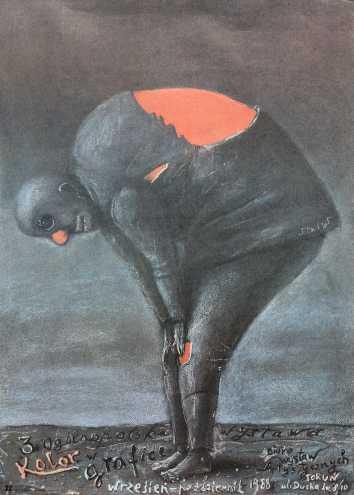
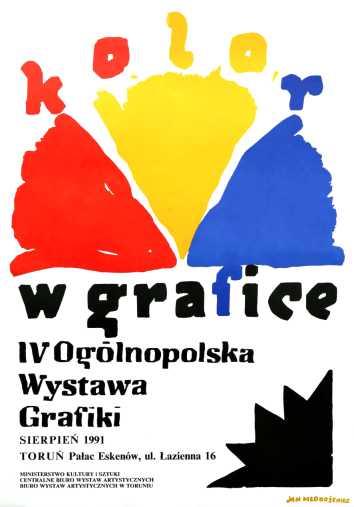
projekt / : Jan Młodożeniecdesign
Ogólnopolskie Wystawy Grafiki Kolor w grafice
W latach 1982–1991 toruńskie BWA (we współpracy z lokalnym oddziałem ZPAP) organizowało co trzy lata wystawy polskiej grafiki współczesnej operującej kolorem. Pierwszą edycję przygotowali komisarze, będący artystami grafikami – Maria Pokorska i Mirosław Piotrowski, którzy wraz z ówczesną dyrektorką BWA, Marianną Olechnicką, byli również pomysłodawcami całego przedsięwzięcia. Od początku przyjęto zasadę, że OWG będą miały formułę zamkniętą, a artyści będą otrzymywać imienne zaproszenia do udziału w prezentacji. Kierowano je do twórców wybitnych, o ustalonej renomie w środowisku graficznym. W zamyśle organizatorów było stworzenie imprezy cyklicznej, która byłaby znacząca w życiu artystycznym kraju. Tak też się stało. Kolejne edycje pokazały, że toruńska wystawa była nie tylko doskonałą okazją do przeglądu aktualnych tendencji i kierunków,
The Nationwide Graphics Exhibitions: Colour in Graphics
Between 1982 and 1991, the BWA in Toruń (in cooperation with the local branch of ZPAP) organised exhibitions of Polish contemporary colour graphics every three years. The first edition was prepared by two graphic artists, Maria Pokorska and Mirosław Piotrowski, who together with the then director of the BWA, Marianna Olechnicka, were also the originators of that undertaking. From the very beginning, the principle of exclusivity was adopted, meaning that the artists presenting their work at the exhibitions would receive personal invitations from the organisers. In this way, the events were expected to showcase works by outstanding artists with wellestablished renown in the graphic arts community. The intention was to create a regularly organised event that would be significant for the artistic life of the country. And indeed, this is what happened: the successive editions demonstrated that Toruń exhibitions provided not only excellent opportunities to become familiar with the current trends and directions espoused by Polish graphic artists, but also to create space for interaction between the artists themselves and the interested public. Each edition of the event was envisaged to deal with the roles and functions of colour. The fact that such an approach was adopted was not purely accidental, as it referred to the lively debates on the specificity of the language of graphics that were taking place at the time. Wiesława Wierzchowska, in the preface to the catalogue of the second edition, wrote: "The role of colour as an instrument of pure colour play is on the decline; colour is becoming an important factor that produces meanings, making references to its historical symbolic qualities".
The International Graphics Triennial: Colour in Graphics
The four editions of the nationwide event had seen the Toruń exhibitions become ever more important to the community of graphic artists and critics, which led to their transformation into events organised on an international scale. The first international triennial was jointly organised by the Wozownia Art Gallery, working in collaboration with the International Graphics Triennial Society, and the District Museum in Toruń as part of the International Print Triennial in Kraków. It was based on the existing tradition of Polish contemporary graphics exhibitions and retained its statutory principles: the exhibitions were to take place every three years,
w których podąża polska grafika, ale także do artystycznych konfrontacji samych twórców i środowiska. Każda edycja wystawy była podporządkowana zagadnieniu koloru. Wybór tematu nie był przypadkowy, nawiązywał bowiem do niezwykle żywej wówczas dyskusji o specyfice języka graficznego medium. Wiesława Wierzchowska we wstępie do katalogu 2. OWG pisała: „Zanika (…) rola koloru jako instrumentu czystej gry barwnej na rzecz wykorzystania go jako ważnego współtwórcy znaczeń, odwołując się do jego historycznie ukształtowanych wartości symbolicznych".
Międzynarodowe Triennale Grafiki Kolor w grafice
W czasie czterech odsłon OWG znaczenie imprezy w środowisku grafików i krytyków rosło, co poskutkowało jej przekształceniem w wydarzenie o charakterze międzynarodowym. Pierwsze MTG zostało zorganizowane we współpracy Galerii Sztuki Wozownia
projekt / : Franco Balandesign

presenting no more than three hundred artworks. The artists invited to participate were carefully selected by the organising committee, which was chaired during first three editions (1994, 1997 and 2000) by Professor Jerzy Grabowski, an outstanding graphic artist and connoisseur, and the spiritus movens of the triennial. Beginning with the fourth edition in 2003, this role was taken over by graphic artist Professor Mirosław Pawłowski, who was then affiliated with the Academy of Fine Arts in Poznań and the Faculty of Fine Arts of the Nicolaus Copernicus University in Toruń, and who has been the event’s curator since the sixth edition of the Triennial in 2009. Since the first editions of the international triennial, its curators have benefitted from the assistance of Anna Jackowska, whose support consists of supervising the organisation of the exhibitions. Almost twenty-five years since the question of colour in contemporary graphic art was laid at the centre of the event’s programme, the organisers of the Triennial decided to slightly revise
projekt / : Marian Nowińskidesign
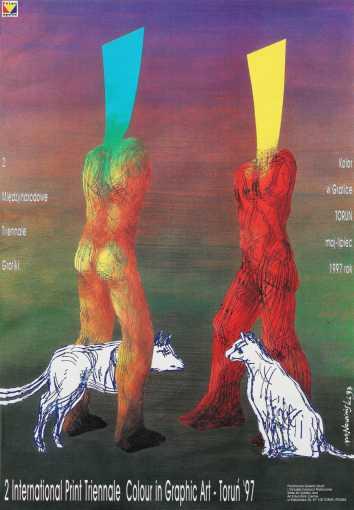
ze Stowarzyszeniem Międzynarodowe Triennale Grafiki i Muzeum Okręgowym w Toruniu jako wystawa w ramach programu Międzynarodowego Triennale Grafiki w Krakowie. Opierało się na doświadczeniach wystaw polskiej grafiki współczesnej, zachowując równocześnie te same założenia regulaminowe – ekspozycje odbywać się miały w cyklu trzyletnim, prezentując nie więcej niż trzysta prac. Artyści zapraszani do udziału byli starannie dobierani przez komitet organizacyjny, któremu przez pierwsze trzy odsłony (1994, 1997, 2000) przewodniczył prof. Jerzy Grabowski – wybitny artysta i znawca sztuki graficznej, spiritus movens MTG. Od czwartej edycji (2003) funkcję tę przejął prof. Mirosław Pawłowski – artysta grafik, związany wówczas z ASP w Poznaniu i WSP UMK w Toruniu, od 6. Triennale (2009) do dzisiaj pełniący funkcję kuratora wydarzenia. Od początku z kuratorami międzynarodowego triennale współpracuje Anna Jackowska, która merytorycznie i organizacyjnie wspiera przygotowanie wystaw.
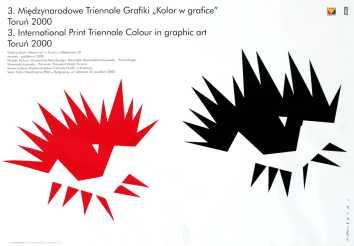
projekt / : Mieczysław Wasilewskidesign
Otwarcie 5. MTG Kolor w grafice, przemawia Prezydent Miasta Torunia Michał Zaleski, obok kurator Triennale Mirosław Pawłowski, dyrektorka Galerii Sztuki Wozownia Anna Jackowska i profesor ASP w Krakowie Jan Pamuła Opening of 5th International Graphics Triennial: Colour in Graphics, speech by Michał Zaleski, Mayor of Toruń, next: Mirosław Pawłowski, curator of the Triennial, Anna Jackowska, director of Wozownia Art Gallery, Jan Pamuła, professor of Academy of Fine Arts in Cracow, 2006
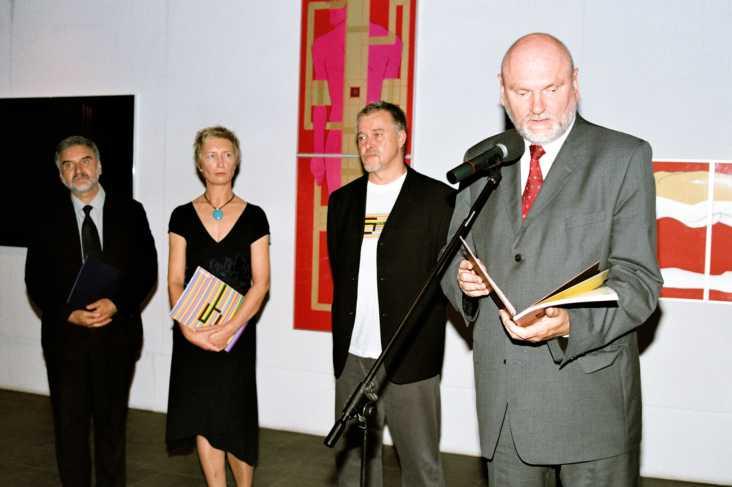
Po niemal ćwierćwieczu od podjęcia przez organizatorów triennale zagadnienia koloru we współczesnej grafice artystycznej postanowiono nieco zrewidować perspektywę spojrzenia na to medium. Dziś kolor, choć nadal ważny, nie stanowi już tak frapującego technologicznie czy teoretycznie zagadnienia. Od 2006 roku organizatorzy, zachowując dotychczasową formę imprezy, postanowili bardziej problematyzować jej kolejne edycje, nadając im podtytuły (V – NOW!, VI – Tożsamość a tradycja, VII – Cyfra, VIII – Duety, IX – Hybryda). (JG)
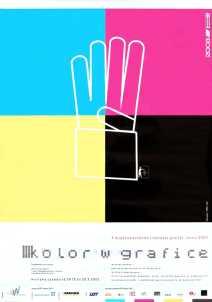
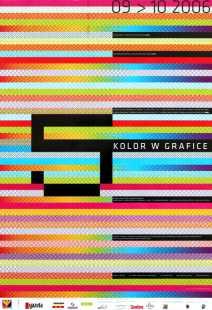
the perspective on the role of that particular medium. Today, colour, although still important, is no longer as fascinating a technological or theoretical issue as it used to be. In 2006, the organisers, while maintaining the established formula of the Triennial, decided to make the topics of its successive editions more specific by including a motto into the established name of the event (NOW! in 2006, Identity and tradition in 2009, Digit in 2012, Duos in 2015 and Hybrid in 2018). (JG)
projekt / : Mirosław Pawłowskidesign
